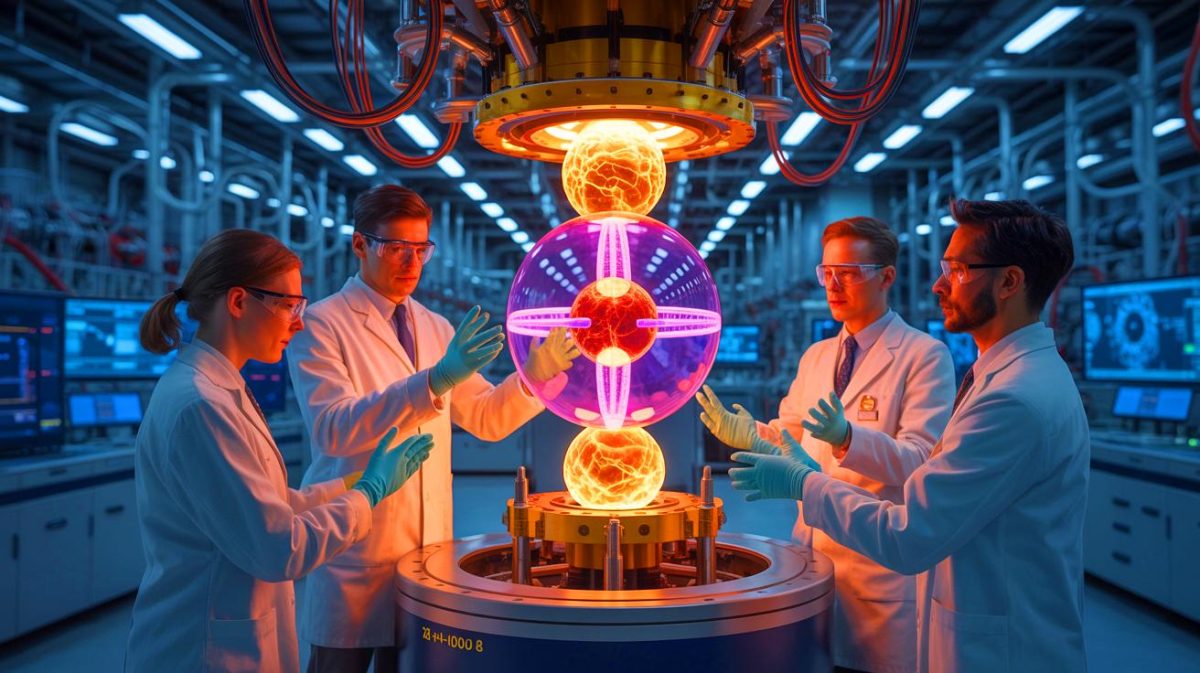| IN A NUTSHELL |
|
In a groundbreaking effort that bridges the past and present, scientists have successfully replicated a forgotten experiment from 1938 that is pivotal in the field of nuclear fusion. This replication, led by a team at Los Alamos, revives the triton-deuterium (DT) fusion experiment originally conducted by physicist A. J. Ruhlig at the University of Michigan. The experiment’s findings have long impacted national security and nuclear energy research, and the recent recreation sheds new light on its historical significance. This article delves into the nuances of the experiment and its implications for modern science.
Modern Neutron Detection Methods Used
The replication of A. J. Ruhlig’s experiment has revealed fascinating insights into his original work. The Los Alamos team noted that Ruhlig had overestimated the ratio of triton-deuterium over deuteron-deuterium neutron yields in his secondary reaction experiment. Modern neutron detection methods allowed scientists to replicate these experiments with greater precision. Mark Chadwick, Associate Laboratory Director for Science, Computation, and Theory at Los Alamos, emphasized the importance of Ruhlig’s hypothesis. He proposed that DT fusion occurs with a high probability when deuterium and tritium are sufficiently close. This hypothesis was critical, as replicating the experiment helped scientists better understand Ruhlig’s role in nuclear fuel physics and confirmed his essentially correct conclusions.
Ruhlig’s insights have had a lasting impact, shaping the course of nuclear physics and influencing national security and energy research. The replication of his work not only validates his original findings but also highlights the profound consequences of his clever insight, which has resonated through decades of scientific advancements.
Novel Approach for Checking on Low-Energy Triton Stopping Powers
This replication also introduces a novel approach to understanding low-energy triton stopping powers in deuterium-containing compounds. The DT fusion reaction is central to advancing fusion technologies, playing a pivotal role in both nuclear deterrence and civilian energy development. For instance, the deuterium-tritium reaction is crucial to the National Ignition Facility’s efforts to harness fusion energy. The Los Alamos team, alongside Triangle Universities Nuclear Laboratory researchers, confirmed the importance and accuracy of Ruhlig’s suggestions.
Despite discrepancies in Ruhlig’s original fusion rate estimates, the modern replication underscores that he was qualitatively correct in asserting that DT fusion is exceedingly probable. Ruhlig’s accidental observations, paired with subsequent Manhattan Project findings, have contributed significantly to the peaceful application of DT fusion in energy projects and inertial confinement experiments. The team’s work not only honors Ruhlig as a historical figure but also reaffirms his contributions to ongoing and vital fusion research.
Modern Experiment Observed Secondary DT Reactions
The modern experiment observed secondary DT reactions, although it suggested that Ruhlig had overestimated the ratio of excess neutron production from fusion products. Given that Ruhlig’s 1938 documentation had sparse details, it remains challenging to accurately gauge his findings against modern results. However, the team’s calculations using contemporary methods agreed with the values measured in the replicated experiment.
Scientists emphasized that these measurements, derived from both Ruhlig’s and the replicated experimental techniques, have significant applications in active fusion efforts, such as those at the National Ignition Facility. This ongoing research continues to push the boundaries of nuclear fusion, aiming to make fusion a viable and sustainable energy source for the future.
Implications for Future Fusion Research
The replication of Ruhlig’s experiment not only honors his contributions to nuclear physics but also has profound implications for future research. By revisiting and validating historical experiments with modern methodologies, scientists can uncover new insights and refine existing theories. This approach enhances our understanding of nuclear processes and aids in the development of more efficient and safer fusion technologies.
The work at Los Alamos serves as a reminder of the importance of historical research in modern scientific endeavors. It highlights the continuous nature of scientific discovery and the potential for past experiments to inform and improve current and future technologies. As we look toward the future of fusion research, how might we continue to leverage historical insights to drive innovation and progress in nuclear science?
Did you like it? 4.5/5 (21)








Wow, reviving a 1938 experiment? Feels like time travel for science! 😊
Quelqu’un pourrait-il expliquer pourquoi cette expérience a été oubliée pendant si longtemps?
C’est passionnant de voir comment les anciennes découvertes peuvent encore influencer la recherche moderne!
Merci aux chercheurs de Los Alamos pour avoir redonné vie à cette découverte perdue! 🙌
Je suis curieux de savoir comment les méthodes de détection de neutrons modernes ont changé les résultats.
1938 à 2023, il était temps de dépoussiérer les archives! 😜
Pensez-vous que cette découverte pourrait vraiment nous rapprocher de l’énergie illimitée?
Je me demande si Ruhlig aurait imaginé que son travail serait si pertinent aujourd’hui.